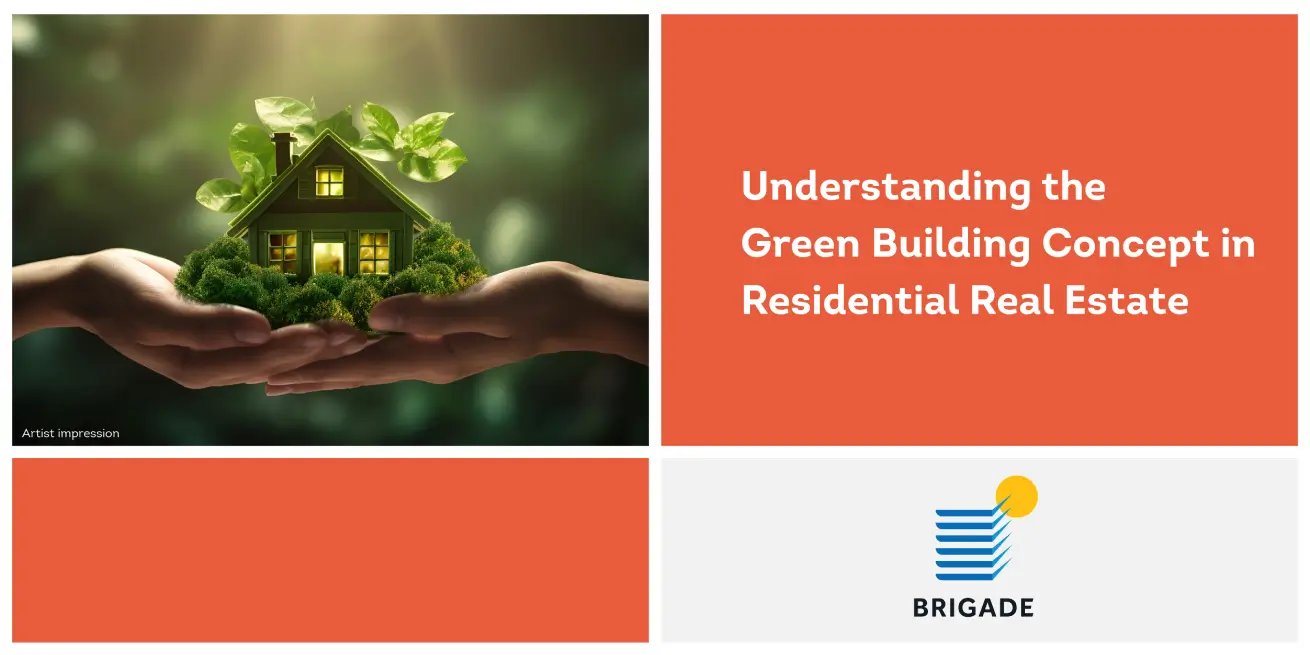


18th January 2024
Understanding the Green Building Concept in Residential Real Estate
In an era where environmental consciousness is at the forefront of global conversations, the concept of green building has emerged as a transformative force in the realm of residential real estate. Green building, also known as sustainable or eco-friendly construction, is a holistic approach that prioritizes environmental responsibility, energy efficiency, and the well-being of occupants. Let's delve into the core principles and benefits of the green building concept in residential real estate.
1. Environmental Sustainability:
At the heart of the green building concept is a commitment to minimizing the environmental impact of construction and operation. Builders and developers adopt sustainable construction materials, such as recycled steel and bamboo, and prioritize locally sourced materials to reduce transportation-related emissions. Additionally, green buildings often incorporate rainwater harvesting systems and utilize landscaping techniques that conserve water resources.
2. Energy Efficiency:
Green buildings leverage innovative technologies and design strategies to enhance energy efficiency. This includes the use of energy-efficient appliances, LED lighting, and smart home systems that optimize energy consumption. The integration of solar panels and other renewable energy sources further reduces dependency on traditional power grids, lowering both costs and the carbon footprint associated with residential buildings.
3. Indoor Air Quality and Health:
The green building concept prioritizes the health and well-being of occupants by focusing on indoor air quality. Low-emission materials, such as low-VOC (volatile organic compound) paints and adhesives, contribute to better air quality. Additionally, efficient ventilation systems and the incorporation of natural lighting create living spaces that are not only environmentally friendly but also promote the health and comfort of residents.
4. Waste Reduction and Recycling:
Sustainable construction practices aim to minimize waste and promote recycling. Builders strive to reduce construction waste by employing efficient construction methods and recycling or repurposing materials whenever possible. This not only minimizes the environmental impact of construction but also contributes to the responsible use of resources.
5. Long-Term Cost Savings:
While the initial costs of constructing a green building, such as Brigade Valencia, may be slightly higher, the long-term savings are significant. Energy-efficient features lead to lower utility bills, and the use of durable materials reduces maintenance and replacement costs.
Many governments and municipalities also offer incentives and tax benefits for green building initiatives, further encouraging developers and homeowners to invest in sustainable practices.
6. Certification Programs:
Various certification programs, such as LEED (Leadership in Energy and Environmental Design) and ENERGY STAR, provide recognized standards for green building. Builders and developers can attain certification by meeting specific criteria related to energy efficiency, water conservation, and overall environmental impact. These certifications not only validate a commitment to sustainability but also enhance the market value of the residential property.
Conclusion
The green building concept in residential properties in Bangalore is more than just a trend; it represents a fundamental shift towards a more sustainable and responsible approach to housing. As individuals become increasingly aware of their environmental footprint, the demand for green homes is on the rise. Embracing the principles of green building not only contributes to a healthier planet but also creates homes that are energy-efficient, cost-effective, and designed with the well-being of both residents and the environment in mind. In the quest for a sustainable future, green building stands as a cornerstone of responsible and forward-thinking residential real estate development.
Explore Brigade Group’s premium developments - Brigade Icon on Mount Road, Chennai, and Brigade Gateway in Kokapet, Hyderabad, both offering luxurious living and world-class amenities.
